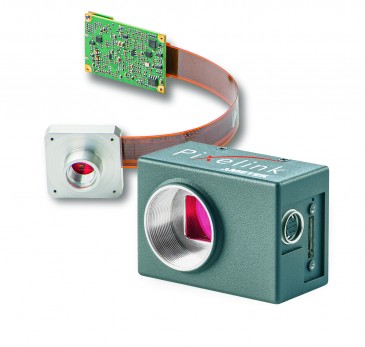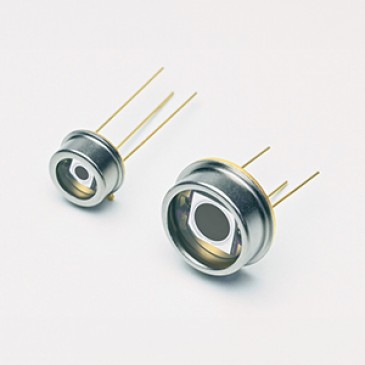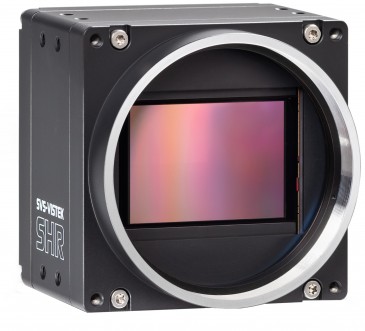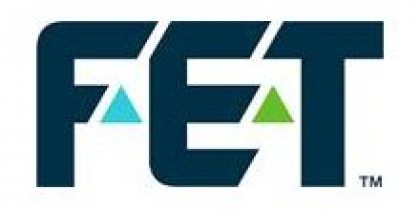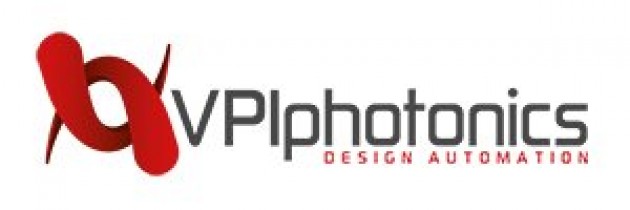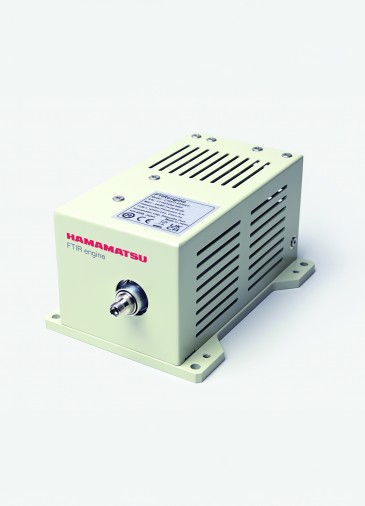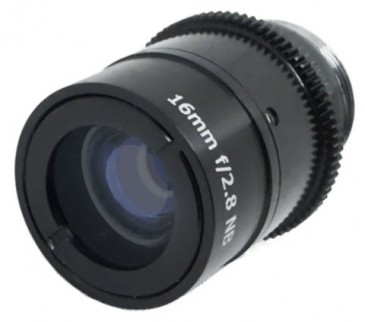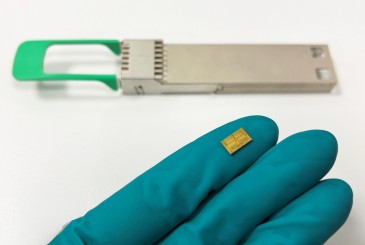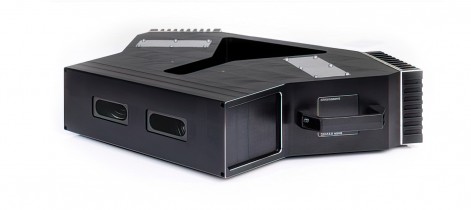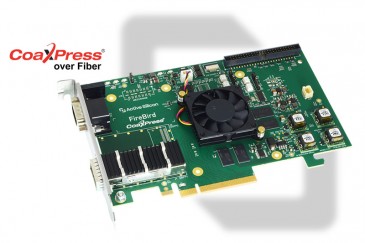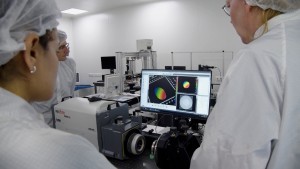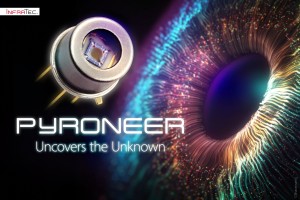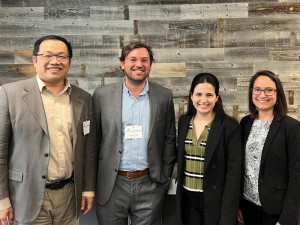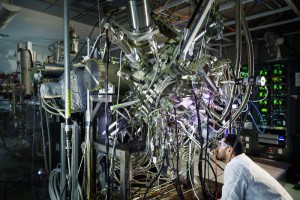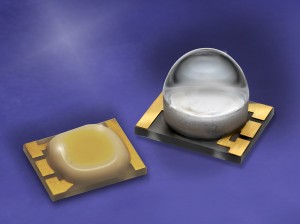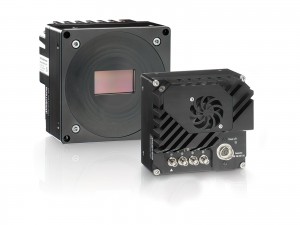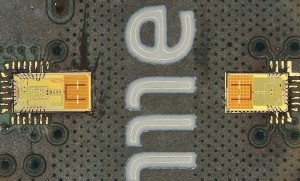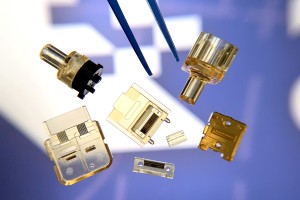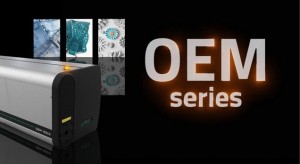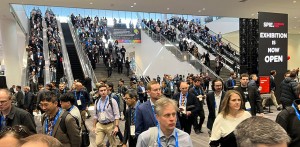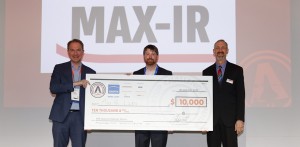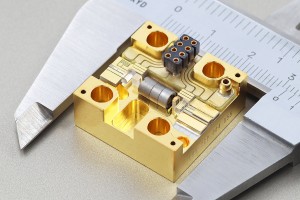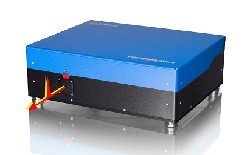
Toptica will showcase their latest products in diode and ultrafast fibre lasers at the upcoming Photonics West 2015 on 7-12 February (booth 623) and BiOS Expo 2015 on 7-8 February, both at the Moscone Center in San Francisco, California (US). Toptica’s products support applications in three major sectors: biophotonics and life sciences; quantum optics and spectroscopy; and test and measurement.
• New ultrafast fibre lasers with multiple colours
A concept in ultrafast laser technology, the FemtoFiber dichro design bioMP (see Figure 1, top of page) offers two synchronised laser beams at different wavelengths out of one box, emitted through the same aperture, according to the company. This dual-colour laser system provides pulses centred at 780 nanometres (nm) with more than 100 milliwatts (mW) and at 1030nm with more than 200mW, both with durations below 100 femtoseconds (fs) at a repetition rate of 80 megahertz (MHz). Easy tuning of temporal and spatial overlap of both beams and all laser parameters can be conveniently accessed via remote control. In addition, everything is integrated into a compact alignment-free turnkey system, according to the company.
Simultaneous live-cell multi-colour two-photon imaging with two or three wavelengths and two-photon excitation of all conventional fluorescent markers are straightforward with the FemtoFiber dichro design bioMP.
Adjustment of the delay between the two laser pulses enables a variation of the absorption modes. If the pulses have no temporal overlap, two identical photons excite one set of fluorophore independently. For overlapping pulses one photon of each colour contributes to transitions centred on twice the energy of a photon with 888nm. This scheme can be used to efficiently excite green fluorescent protein (GFP) and other fluorophores with a two-photon excitation maximum around 900nm.
Toptica also showcases its FemtoFiber smart laser systems now available with additional colours and shorter pulses. Emission wavelengths of 780nm, 1030nm or 1550nm can be combined with pulse durations of 6 picoseconds (ps), 800fs or even 400fs with output powers of more than 100mW. Based on state-of-the-art fibre technology and an ultra-stable cost-effective design, all devices offer an integrated turnkey system with compact footprint. This device is suitable for incorporation into microscopes, two-photon generation, amplifier seeding for material processing, optical parametric chirped-pulse amplification (OPCPA) seeding, terahertz (THz) generation and other applications.
• Intelligent features and touch control with frequency-converted diode lasers
Toptica’s frequency-converted diode lasers TA-SHG pro (see Figure 2) in combination with the DLC pro offer great tools that make a scientist’s life much more enjoyable. Thanks to new, intelligent functions these systems revolutionise the daily work with frequency-converted lasers, all with low noise level.

Figure 2. Unprecedented convenience and best specifications for challenging tasks with frequency converted tuneable diode lasers are enabled with the DLC TA-SHG pro. Author: Dr. Tim Paasch-Colberg, Toptica Photonics AG
Intelligent, automated alignment features integrated directly into the laser head simplify the work of the user: With the push of a button, the AutoAlign function reoptimises the SHG system output power by maximising the coupling efficiency of the laser into the TA chip and the SHG resonator. The PowerLock function automatically compensates residual drifts caused by changing environmental conditions, offering unvarying stable laser output with constant power. Fibre-coupled systems using the FiberMon option can monitor the optical power coupled to the SHG output fibre.
These features are easily controlled using the DLC pro, Toptica’s exceptional digital laser controller. It offers convenient access to all relevant parameters via a 7-inch touch display as well as knobs and buttons for manual operation. And it is digital, so it communicates with your computer and it has a remarkably low noise level. And it brings laser-locking to the next stage.
• Tuneable diode lasers with high resolution and fully digital control
The new widely tuneable diode laser CTL (see Figure 3) provides a tuning range of up to 100nm and guarantees 100% mode-hop-free operation. Excellent mechanical design and active SMILE-technology (patent-pending) enable continuous wavelength-tuning over the laser diode’s full gain spectrum with an output power of up to 80mW.
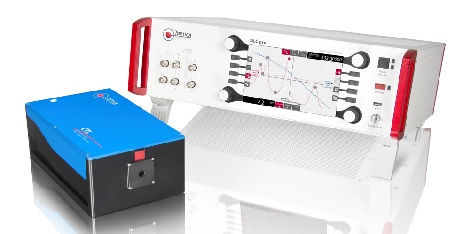
Figure 3. The CTL offers 100nm mode-hop-free tuning range. Control all of its parameters with the fully digital DLC pro control electronics. Author: Dr. Tim Paasch-Colberg, Toptica Photonics AG
The CTL features a narrow line width and the same well-known stability and ease of use as all Toptica’s diode lasers. It is available at two tuning ranges, 915nm to 985nm and 1530nm to 1620nm. Operated with the digital DLC pro laser control the CTL is a suitable source for applications such as quantum dots, micro-cavities or molecular spectroscopy. Narrow line width, low-noise and highest convenience are guaranteed with this package.
• Peak dynamic range in time-domain terahertz spectroscopy
Toptica’s TeraFlash femtosecond THz platform (see Figure 4) reaches an incredible signal-to-noise ratio (SNR) of 60 decibels (dB) in a single measurement of only 50 milliseconds (ms). Averaging increases the dynamic range to 90dB in less than a minute.
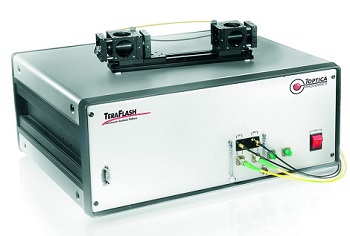
Figure 4. SNR values and average power are achieved with the TeraFlash time-domain THz platform.
The TeraFlash platform consists of Toptica’s ultrafast FemtoFErb fibre laser and a new generation of indium-gallium-arsenide (InGaAs)-based THz antennas reaching an average THz power of 25 microwatts (μW).
• New multi-laser engines with more colours
Demanding applications such as fluorescence microscopy require robust but flexible multi-laser engines. Toptica’s iChrome products fulfil these demands. The new iChrome SLE (see Figure 5) integrates up to six individual diode or diode-pumped solid-state (DPSS) lasers in one box. It also offers a fibre switch that provides fast switching between two single-mode fibre outputs.
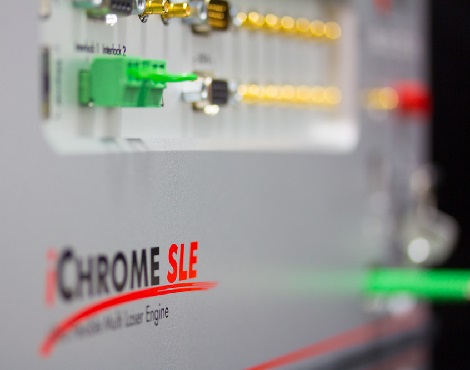
Figure 5. The iChrome SLE enables fast switching of six individual laser diodes between two fibre outputs.
Toptica’s proprietary automated alignment technology constant optical output level with auto calibration (COOLAC) guarantees constant output power levels. A microprocessor-based architecture enables fast wavelength and intensity changes, the key for high-speed modulation applications. The unified user interface makes the integration a breeze since all individual laser lines share the same controls. The opto-mechanical setup permits easy upgrades for flexible applications, even “in the field”.
Toptica’s popular OEM diode laser series iBeam smart now comes with new wavelengths: 505nm and 633nm with record power and stability. At 633nm, Toptica also offers the wavelength-stabilised iBeam smart wavelength stabilised (WS) designed to replace helium-neon (HeNe) lasers with a compact, yet more powerful reliable OEM diode laser system.
Figure 1 (top of page). The FemtoFiber dichro design bioMP provides synchronised sub-100fs pulses at two different wavelengths. Author: Dr. Tim Paasch-Colberg, Toptica Photonics AG










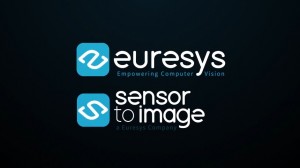
















 Back to Products
Back to Products

